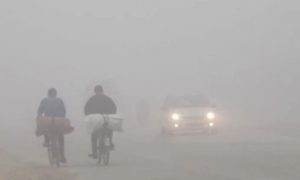The total phase of the May 26 Lunar Eclipse will end at 4.58 pm, while the partial phase will end at 6.23 pm. The Lunar Eclipse will be visible from certain Indian cities.
The Total Lunar Eclipse occurring on Wednesday will be visible in several countries as the Moon turns into a bloodmoon. However, India will witness a partial lunar eclipse just after moonrise in the north-eastern states, some parts of West Bengal, some coastal parts of Odisha and Andaman & Nicobar Islands.
According to the Ministry of Earth Sciences, the partial phase of the eclipse will begin at 3.15 pm in India. The total phase of the eclipse will end at 4.58 pm, while the partial phase ends at 6.23 pm. The lunar eclipse occurs on a full moon day when the Earth comes in between the Sun and the Moon and when all the three objects are aligned.

Where to watch eclipse in India and world?
The eclipse will be seen in Agartala, Aizawl, Kolkata, Cherrapunji, Cooch Behar, DiamondHarbour, Digha, Guwahati, Imphal, Itanagar, Kohima, Lumding, Malda, North Lakhimpur, Paradee, Pashighat, Port Blair, Puri, Shillong, Sibsagar and Silchar.
According to Nasa, the total lunar eclipse will be visible near moonset in the United States and Canada, all of Mexico, most of Central America and Ecuador, western Peru, southern Chile and Argentina. Along the Asian Pacific Rim, the total eclipse will be visible just after moonrise. Meanwhile, the Partial Eclipse, when the Moon enters and exits the Earth’s shadow, will be visible in the eastern United States and Canada.
Apart from India, Nepal, western China, Mongolia, and eastern Russia will also witness the partial eclipse.

The next lunar eclipse will be visible from India on November 19, 2021.
The bloodmoon
As the full moon enters Earth’s shadow, it will appear bigger and brighter. An astronomical highlight of 2021, the eclipse will be a combination of a full Moon, a bloodmoon, and a Total Lunar Eclipse.
The deep red, orange colour of the moon during an eclipse is a combination of physics working with Earth’s atmosphere to create the spectacular visual. Sunlight bends and scatters as it passes through Earth’s atmosphere. In the air, colours at the blue and violet end of the rainbow scatter more widely than colours like red and orange. As the red light travels a straighter path through the air some of this heavily filtered morning and evening light makes it all the way through Earth’s atmosphere and reaches the lunar surface illuminating the lunar surface.






